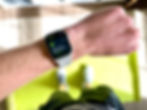
Prolonged periods of sitting, whether at it's at work or home, can contribute to a variety of potential health risks, including depression, unhealthy eating patterns, and cardiovascular disease.
Another related health concern, despite its light-hearted name, can have serious implications: dead butt syndrome. This condition, also medically termed "gluteal amnesia," occurs when the muscles in a person's buttocks become inactive and forget how to perform their essential functions, such as stabilising the pelvis and maintaining proper body alignment.
Fitness experts at fitness equipment brand Mirafit.co.uk say, "Dead butt syndrome describes the condition in which the glute muscles become inactive due to extended periods of sitting, lack of physical activity, or improper muscle engagement. Preventative techniques and treatments usually include specific exercises to strengthen and re-activate the glutes and adjustments to daily habits to prevent further muscle inactivity."
What are the signs of dead butt syndrome?
"The main symptoms for dead butt syndrome to look out for are numbness in the glutes, pain that starts in your lower back or bottom and runs down the back of your leg, pain in your calves, loss of strength in the glutes and hip flexors, lower back pain and knee pain."
How do I prevent dead butt syndrome?
"It's not always easy changing your lifestyle and habits if you are busy at work in front of a computer all day. However, prevention is always better than a cure, and here are some tips to help battle dead butt syndrome:
Set a timer for every hour and get up and move around for a few minutes to ensure you are taking a break from a seated position.
Sit with an upright posture, which will open the hip flexors more and ease the stress on the glutes.
Add some exercises to your daily routine that will strengthen and condition the glutes and relieve any tightness on the hips."
Below, the fitness experts at Mirafit.co.uk share their top exercises to help prevent dead butt syndrome:
1. Banded Squats
When performing a squat, enhance the exercise by incorporating a resistance band around your knees. This movement not only strengthens the glutes, quads, and hamstrings, but the band will also target the gluteus medius muscle for a more extensive workout.
2. Monster Walk
Begin by placing a resistance band around your ankles and positioning your feet slightly wider than hip-width apart. Proceed to take small steps forward at a slow pace. You should experience a sensation of burning and activation in the outer muscles of your glutes.
3. Frog Glute Bridges
Instead of executing a standard glute raise, maintain your feet near your glutes and position your knees outward. From this stance, lift your glutes off the floor. This modified glute bridge increases the engagement of the outer glute muscles.
4. Side Plank with Leg Raise
Position yourself into a side plank with your elbow positioned beneath your shoulders. While maintaining this stance, lift and lower your upper leg. The gluteus medius plays a vital role in this leg abduction action, in addition to stabilising the hips on the opposite side during the side plank.
5. Drop Lunge
To do the drop lunge, step back and cross the opposite leg over. Rotate your hips while keeping your upper body straight. Bend your knee towards the floor, then push off the front foot to return to the starting position. This lunge variation increases hip mobility and strengthens the outer glutes and thighs.
6. Deadbug
Begin by lying on your back with arms extended in front of your shoulders and knees bent above your hips. Extend one arm and the opposite leg, then return to the starting position before switching sides. This core workout strengthens the abdominal muscles and promotes proper hip alignment.
Make sure to avoid sitting for too long to prevent pain and discomfort. Remember to take breaks throughout the workday to move around and be more active. If you're feeling the effects of dead butt syndrome, don't try to diagnose yourself, and consult a GP or physiotherapist for professional medical advice.
